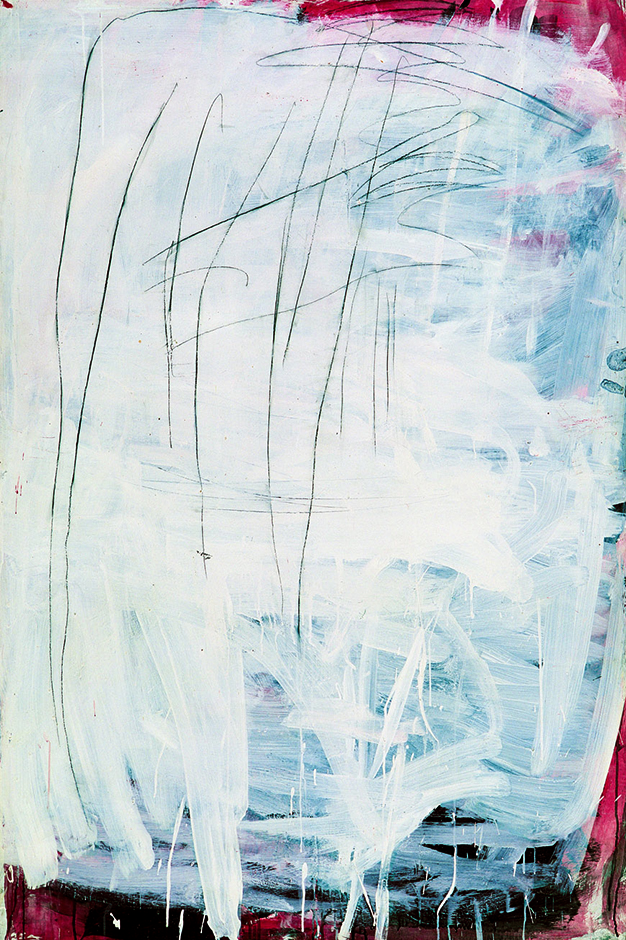Tony Tuckson: Paintings and Drawings
Tony Tuckson: Paintings and Drawings includes a group of works that are related to two Tony Tuckson paintings in the TarraWarra Museum of Art collection: Black on White, Large Upright [TP16], c. 1958–61, and Untitled [TP185], c. 1973. Tuckson’s highly intuitive abstract mark making and the physical gestures embodied in his paintings register a vast range of feeling and temperament. A number of works on paper are also included which highlight his interest in the art of Ian Fairweather and signal his progression from figuration to abstraction.
Tony Tuckson was born in Egypt and spent his early childhood on the Suez Canal in the 1920s. His schooling was in England, and he went to art school in London 1937-40. He was in the Royal Air Force from 1940-46 and met Margaret Bisset, his wife to be, in 1942, while he was posted in Sydney. After the war he settled in Australia and studied at East Sydney Technical College from 1946-49. Influenced by the likes of Paul Klee, Pablo Picasso, Paul Cézanne and Henri Matisse, it is significant that in 1954 Tuckson also acquired a small work by Ian Fairweather, which hung in his living room.
Between the time Tuckson joined the Art Gallery of New South Wales in 1950 and the time of his first solo exhibition at Watters Gallery in 1970, he remained basically an ‘underground’ artist, with his works seen only by family members and a couple of select friends. His first solo exhibition was held in 1970, three years before his untimely death. This exhibition charts the development in the scope of Tuckson’s paintings and drawings as described by Terence Maloon in the catalogue for the exhibition:
‘The early paintings all feature an internal echo of their framing edge. They are characteristically small, contained, bounded—typical easel paintings in this respect. Tuckson’s subsequent work grows dense and tumultuous with pent-up energy … and then he breaks-out. The format of his later paintings and drawings becomes an open field, spacious and radiant—an arena in which to act.’
